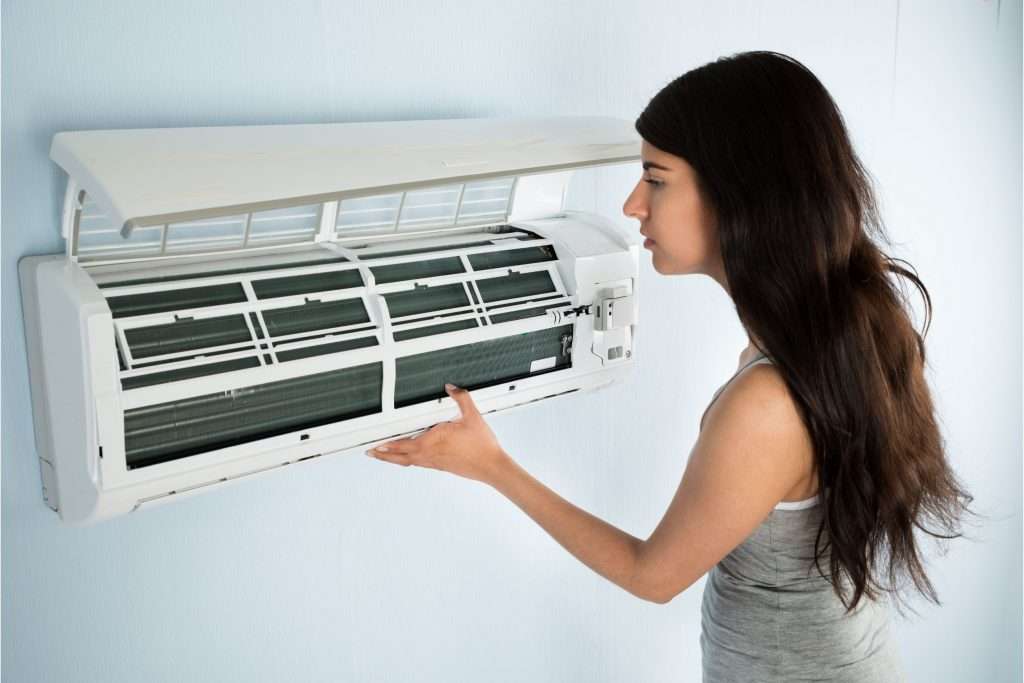When it comes to purchasing an air conditioning (AC) unit for your home, there’s one key factor you need to take into consideration: the Seasonal Energy Efficiency Ratio (SEER). This standard is designed to help homeowners evaluate their AC units and understand how much energy they consume.
The SEER standard has been in place for decades, but it recently saw some updates that are important to know about. In this blog post, we’ll break down what the SEER standard means for your AC unit and how it impacts your energy usage. We’ll also cover the history of the SEER standard and what you need to look out for when selecting a new AC unit. With this information, you’ll be able to make an informed decision about your air conditioning system.
What is the SEER standard?
The SEER standard stands for Seasonal Energy Efficiency Ratio, and it is a crucial factor to consider when purchasing an air conditioner for your home. In simple terms, the SEER rating measures the energy efficiency of an air conditioner. The higher the SEER rating, the more energy efficient the unit is.
But what does this mean for you as a homeowner? An energy efficient air conditioner with a high SEER rating can help you save money on your electricity bills. It will consume less energy while still providing effective cooling for your home. On the other hand, a unit with a low SEER rating may be cheaper upfront, but it will end up costing you more in the long run due to higher energy consumption.
The SEER rating is calculated by dividing the cooling output of the air conditioner during a typical cooling season by the electrical energy input during the same period. This ratio gives you a clear idea of how efficiently the unit converts energy into cooling power. By choosing an air conditioner with a higher SEER rating, you can ensure that you are making a more energy efficient and cost-effective choice for your home. So, the next time you’re in the market for a new AC unit, make sure to check the SEER rating and choose wisely.
The History of the SEER Standard
The SEER standard dates back several decades. It was first introduced in the 1970s as a way to measure the energy efficiency of air conditioning units. At that time, the average SEER rating for residential air conditioners was around 6 or 7. This meant that these units were not very energy efficient and consumed a significant amount of electricity.
Over the years, there have been several updates and revisions to the SEER standard in an effort to improve energy efficiency and reduce the environmental impact of air conditioning units. One of the most significant updates came in the 1990s when the minimum SEER rating was increased to 10. This helped to spur the development of more energy-efficient units and encouraged homeowners to consider the SEER rating when purchasing an AC unit.
Since then, the SEER standard has continued to evolve. The minimum SEER rating for residential air conditioners was increased to 13 in 2006, and there are ongoing discussions to raise this minimum even further in the future. These updates reflect the industry’s commitment to improving energy efficiency and reducing greenhouse gas emissions.
The history of the SEER standard is a testament to the importance of energy efficiency in the HVAC industry. It shows how far we have come in terms of developing more efficient cooling systems and highlights the ongoing efforts to further improve energy efficiency. As homeowners, it is important for us to understand this history and stay informed about the latest updates to the SEER standard so that we can make the best choices for our homes and the environment.
Recent SEER Standard Updates
Over the years, the SEER standard has seen some important updates that homeowners need to be aware of. These updates reflect the HVAC industry’s commitment to improving energy efficiency and reducing environmental impact. One of the most significant updates came in the 1990s when the minimum SEER rating was increased to 10. This was a major milestone that helped encourage the development of more energy-efficient AC units and prompted homeowners to consider the SEER rating when making a purchase.
Since then, there have been ongoing discussions about raising the minimum SEER rating even further in the future. This shows that the industry is constantly striving to improve energy efficiency and reduce greenhouse gas emissions.
Keeping up with the recent updates to the SEER standard is crucial for homeowners who want to make the most energy-efficient and cost-effective choices for their homes. By staying informed about these updates, you can ensure that you are selecting an AC unit that meets the latest energy efficiency standards and provides optimal cooling performance.
Before purchasing a new AC unit, be sure to research and consider the most recent updates to the SEER standard. This will help you make a well-informed decision and choose an air conditioning system that not only keeps your home comfortable but also saves you money on your electricity bills. The AC experts at Home Comfort USA are here to answer any questions you may have.
Knowing Your SEER Rating is Important
Understanding your SEER rating is crucial for homeowners who want to make informed decisions about their air conditioning units. Your SEER rating directly impacts your energy consumption and cost savings, so it’s essential to know where your unit stands.
By knowing your SEER rating, you can determine how energy-efficient your AC unit is and identify areas for improvement. A higher SEER rating means your unit consumes less energy and saves you money on your electricity bills. On the other hand, a lower SEER rating may indicate that your unit is not operating as efficiently as it could be, leading to higher energy consumption and costs.
Knowing your SEER rating also allows you to compare it to the minimum SEER rating standards set by the industry. This information helps you assess whether your unit meets current energy efficiency guidelines or if it’s time to consider an upgrade.
Regularly monitoring and understanding your SEER rating can empower you to take control of your energy usage, make cost-effective decisions, and contribute to a more sustainable environment. So make sure to familiarize yourself with your SEER rating and use it as a guide when evaluating your AC unit’s efficiency and performance. If you have questions, the HVAC experts at Home Comfort USA are here to help you out.
How to Find Your AC Unit’s SEER Rating
Finding your AC unit’s SEER rating is a straightforward process that can be done with just a few simple steps. The first place to check is the manufacturer’s documentation or the unit’s user manual. These resources typically provide detailed information about the unit, including the SEER rating.
If you no longer have the documentation or user manual, don’t worry. The SEER rating is often labeled on the unit itself. Take a look at the outside casing or panels of the AC unit. You may find a sticker or label that displays the SEER rating along with other important information.
If you’re still having trouble locating the SEER rating, don’t hesitate to reach out to the manufacturer or contact a professional HVAC technician. They can help you identify the SEER rating of your AC unit and provide any additional information you may need.
Once you have found the SEER rating, take a moment to compare it to the industry’s minimum standards. This will give you an idea of how your unit stacks up in terms of energy efficiency. If your AC unit’s SEER rating falls below the minimum standards, it may be worth considering an upgrade to a more efficient model.
Knowing your AC unit’s SEER rating is key to understanding its energy efficiency and performance. By taking the time to find and evaluate this rating, you can make informed decisions about your air conditioning system and ultimately save money on your energy bills.
What to Know Before Purchasing a New AC Unit
Before purchasing a new AC unit, there are a few important factors that homeowners need to keep in mind. First and foremost, it’s crucial to consider the SEER rating of the unit. As we’ve discussed earlier in this blog post, the SEER rating is a measure of the energy efficiency of the air conditioner. The higher the SEER rating, the more energy efficient the unit is, which can lead to significant savings on your electricity bills.
Another important consideration is the size of the AC unit. It’s important to choose a unit that is the right size for your home. An undersized unit will struggle to cool your home effectively, while an oversized unit may cycle on and off too frequently, leading to inefficiency and unnecessary wear and tear.
Additionally, it’s important to consider the overall quality and reliability of the AC unit. Look for units from reputable manufacturers that offer warranties and have a good track record for performance and customer satisfaction.
Lastly, don’t forget about regular maintenance and servicing of your AC unit. Proper maintenance can help ensure that your unit operates efficiently and can extend its lifespan. Schedule an appointment with the HVAC professionals at Home Comfort USA when it’s time for an AC check-up.
By taking these factors into consideration before purchasing a new AC unit, homeowners can make a well-informed decision that not only provides optimal cooling for their home but also saves money on energy bills in the long run.






